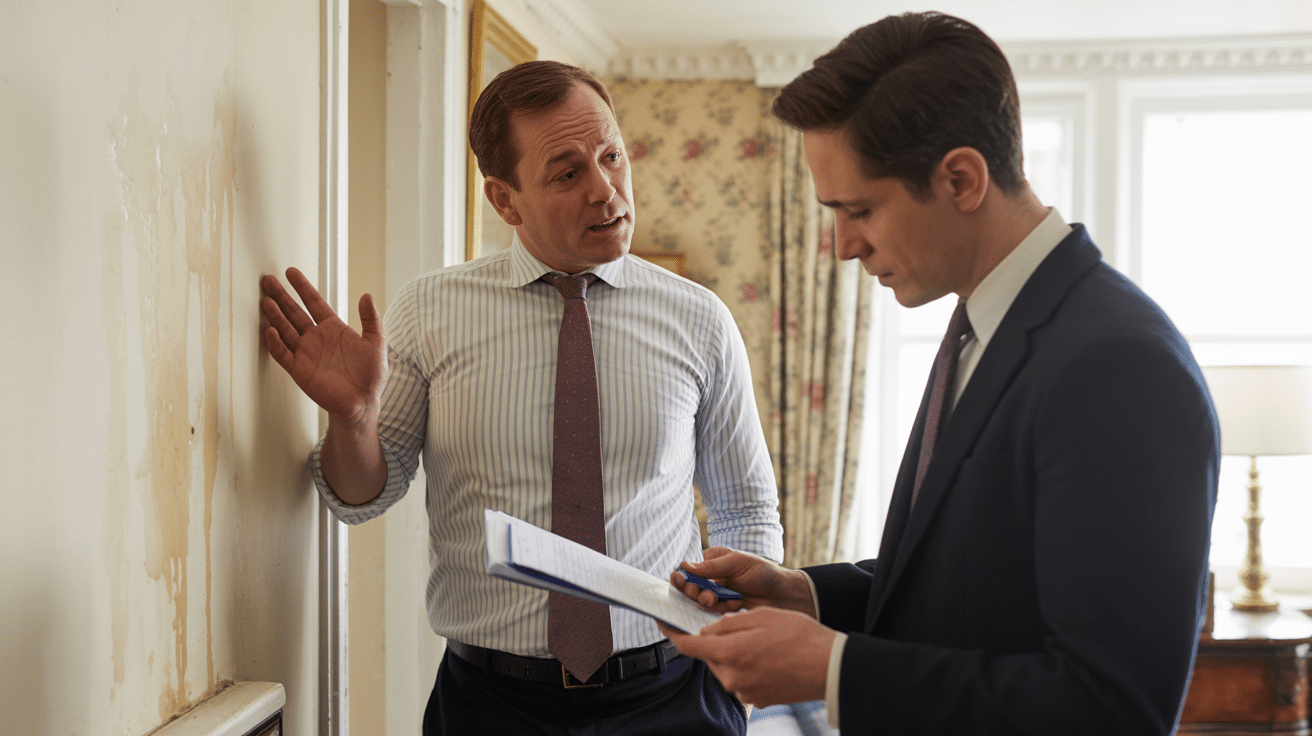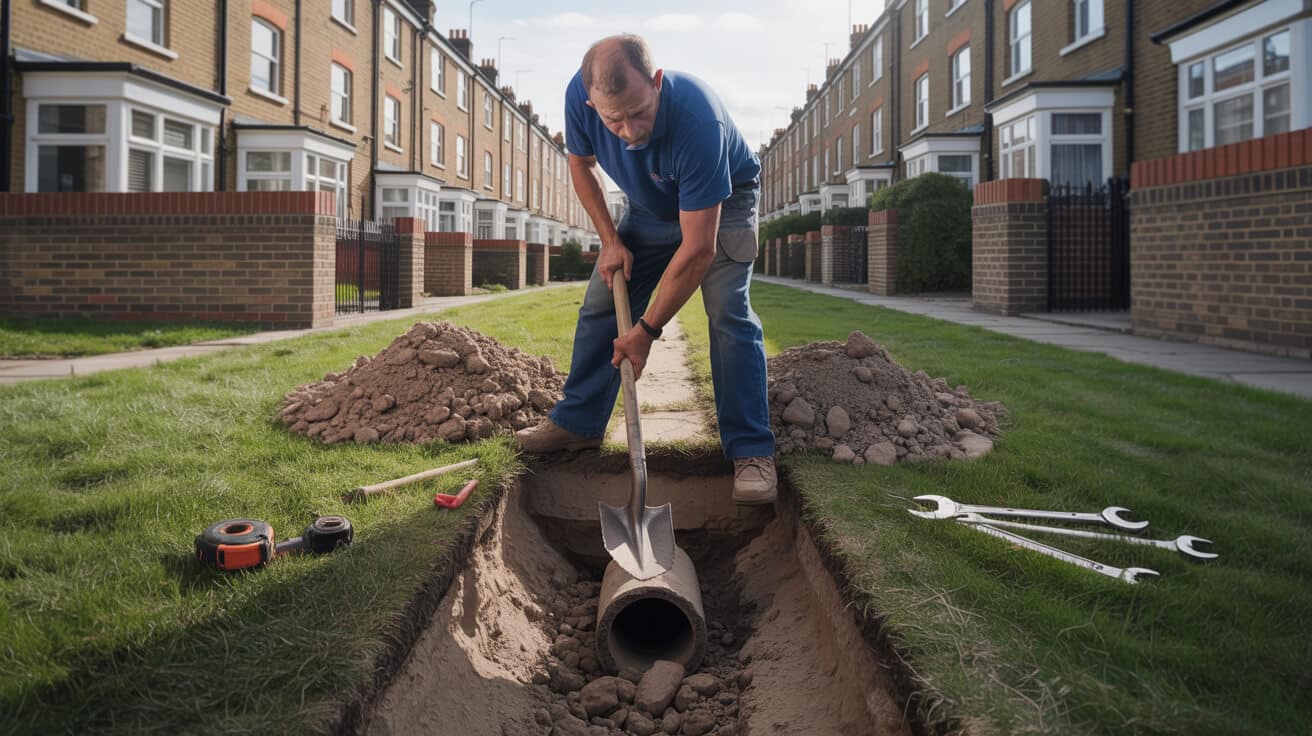 New Build VS Period Property Heating Costs Compared
New Build VS Period Property Heating Costs Compared

Can You Trust the Numbers? The Real Heating Cost Gap Between New Builds and Period Homes
Heating your building isn’t just a matter of timer settings or hoping for the best—it’s about controlling a persistent tug-of-war between modern tech and inherited draughts. With the cost of energy still pushing upwards and compliance expectations tightening, knowing exactly where your property stands can mean the difference between pocketing hundreds or watching money slip away every winter. Whether you’re making decisions for your own home, a growing rental portfolio, or council stock, what’s inside the walls is often more telling than any shiny brochure.
A single uninsulated hallway can silently double your bill if left untreated.
The battle lines are drawn early: new builds leave the gate with a toolkit of insulation, smart controls, and airtight design. Period homes, for all their street appeal, tend to carry the scars of lax regulations—solid walls, single glazing, and heat-killing gaps. But as always, the devil sits in the details. It’s not just about “old versus new,” but exactly what’s been done—and who’s been doing the upgrades—since the place was last rewired or reputedly ‘sealed’.
You’ll spot wild annual heating cost swings of £400–£1,000 as soon as you dig below the surface (English Housing Survey, 2023). Yet, most owners don’t know their real exposure until a “surprise” bill lands mid-February or a tenant calls about their ice-cold flat. The truth is, real-life cost isn’t dictated simply by a property’s age, but by the sum total of its upgrades, controls, and the discipline of maintaining them—and that last bit is exactly where serious savings (or pain) stack up.
What Makes Period Homes So Expensive to Heat—And Can New Builds Actually Deliver What They Promise?

If you inherited a beautiful Victorian or Edwardian, you know the feeling: radiators scorching hot, yet the hallway is chilly, and you chase after heat with rolled-up towels and makeshift fixes. Meanwhile, new builds boast EPC bands B or A, with sleek policies and “air tightness” certificates. But beneath these surface contrasts, it’s not simply nostalgia versus newness, but the nuts and bolts in every room.
What leaks warmth (and pounds) in old homes
- Solid, uninsulated walls: These avoid the modern cavity—so heat races out in every direction, unopposed.
- Single-glazed sash or ageing casements: Even well-maintained, these bleed warmth. DIY draught fixes rarely match thermal upgrades.
- Uninsulated attics and floors: Heat vanishes right into the brickwork or up through old roof spaces, especially where original insulation is missing or well past its best-before date.
- Chimneys and joinery gaps: Open flues and loose floorboards don’t just feel draughty; they provide a superhighway for costly heat loss.
Even in a well-kept terrace, neglecting the fabric can quietly club your annual bill.
Where new builds take the lead
- Built-in insulation: Cavity walls, deep loft insulation, and underfloor coverage are regulated, not optional.
- Modern glazing: Double or triple-glazed units, post-2016 especially, are set as minimums—stopping the worst losses.
- Pressure-tested airtightness: Properties must survive a certified air leakage test before completion. No hidden cold spots.
- Mechanical ventilation with heat recovery (MVHR): Maintains fresh air without letting all the warmth escape.
Yet, a “new build” isn’t a magic bullet—if maintenance, programming, or servicing falls by the wayside, newer properties can still underperform. Conversely, an upgraded period property, with insulation and up-to-date systems, can head off much of the traditional “cost penalty”—but rarely all of it.
How Bad Is the Annual Cost Gap? Evidence Behind the Bills

Let’s get real: how much does history actually cost? The headline difference between the oldest and newest UK homes is £400 to £1,000 per year in additional heating spend (English Housing Survey, 2023)—a figure that scales up for large, high-ceilinged or especially draughty period homes.
| Property Age | Typical Heating Cost Per Year | Average EPC Band |
|---|---|---|
| Pre-1930s (Period) | £1,600 – £1,900 | D–E |
| Post-2016 (New Build) | £900 – £1,200 | A–B |
These figures are only averages. A modernised 1900s home with new controls can outpace an uncared-for 1990 build, but uninsulated classic stock consistently drags costs up. And if you see high ceilings and original joinery, your energy bills are just waiting for a cold snap.
Cold, Hard Checks That Matter
- Request actual heating bills for the past year: before buying or letting—don’t rely on “typical usage profiles”.
- Scrutinise the date and rating on the current EPC certificate: —anything below E is a red flag for both running costs and legal compliance.
- Demand a breakdown of upgrades and service records: —the age and type of insulation, boiler, and smart controls all factor in.
Properties that hide their history on paper frequently hide big bills in reality.
What Has the Strongest Impact on Reducing Heating Costs—Habits or Hardware?

You can’t control the age of a building after the fact, but what you do with it now makes all the difference. It’s not about having the newest boiler or the trendiest smart stat—it’s the insulation, the way you run your system, and how closely you manage energy losses.
The four upgrades that matter most:
- All-over insulation: This includes lofts, cavity walls, and when practical, underfloors. For period homes, even partial upgrades deliver big paybacks.
- High-performance glazing: Secondary glazing transforms period windows without stripping their character, closing the gap with newer builds.
- Modern boiler or heat pump: Trading a 1990s relic for a condensing boiler (or better, a heat pump) typically slices bills by 20–30%, regardless of property age.
- Intelligent controls: Multi-zone thermostats, occupancy sensors, and learning stats optimise every degree, especially in larger or multi-use properties.
It’s the combination of these choices—insulation plus smart controls, plus regular servicing—that consistently drives costs down for every buyer persona.
Chasing a fancier boiler without basic insulation is like taping £10 notes to the radiators.
Documentation meets day-to-day use
- Demand real energy usage data, not just an EPC printout.
- Target practical, affordable upgrades first—often servicing and simple insulation tweaks, before high-tech investments.
- Prioritise a “little and often” approach—annual system checks and philtre cleans close more gaps than a flashy system instal done once a decade.
Why Heating System Design and Controls Decide Your Comfort—and Your Statements

No one feels the chill of a poorly balanced system like the person who pays the bills. While insulation sets your property’s natural efficiency baseline, the system delivering the heat (and, crucially, how you programme and interact with it) changes everything about what you owe at the end of the season.
What holds period homes back
- Standard set-up?: A single old gas or oil boiler, crude time clock, all-or-nothing radiator control. Even “modern” replacements may simply replicate inefficient layouts.
- Zoning pain points: Retrofitting multi-zone control or smart valves is possible, but tends to be painful and patchy in older circuit designs.
The new build “default” is a different world
- Low-temperature systems — UFH first: Underfloor heating (UFH) and air source heat pumps are now standard, running at lower flow temperatures and squeezing more efficiency from every kW.
- Digital, app-based controls: Learning stats, zone splitting, and responsive schedules mean owners rarely “heat the house for nobody.”
- Installer accountability: System commissioning is recorded and checked before you ever take the keys.
Modern controls can halve the cost penalty of older systems—but only if they’re actually used as designed.
Even in a period property, modular upgrades—zone valves, wireless thermostats, smart radiator heads—multiply the leverage you get from each pound invested.
Which Current UK Heating Rules Should Shape Your Next Move?

Regulations have leapt forward, and ignoring them is an expensive, sometimes actionable mistake. Knowing what’s in effect (and what’s on the horizon) is just as important as “shopping for savings”.
The must-check rules today
- EPC minimum for lettings: By 2025 in England, private rentals require EPC E or better—or you’ll face improvement demands or fines.
- Grant eligibility standards: ECO4 and the Boiler Upgrade Scheme demand installer certifications, up-to-date paperwork, and full documentation trails.
- Certified instals: G3 for unvented, WRAS for water fittings—these aren’t box-ticking exercises, but legal and warranty lifelines.
A missing certificate can block your sale, void your insurance, or burn through a grant before it starts.
What about gas boilers and the 2027 law?
- No new gas boilers in new builds post-December 2027: —full stop. Retrofitting a period or existing house is still permitted… for now, but Financial/Environmental compliance is getting tough fast.
- Landlords: MEES (Minimum Energy Efficiency Standard) rules are not going away—: future upratings are almost certain to close more loopholes.
Only certified plumbing and heating engineers can provide the documentation you’ll need for all legal and grant processes. Miss a step, and you could wipe out years of savings in a single dispute or compliance audit.
What Should Owners, Agents, and Landlords Insist Upon Before Any Upgrade or Purchase?

The difference between “I should have known” and “Glad I got ahead” often comes down to three unskippable checks before any major purchase, letting, or retrofit.
The logical, not just legal, checks
- EPC certificate review: See the details, not just the grade—mandatory improvement suggestions are usually aligned with most cost-effective fixes.
- Annual bills, not ballpark guesses: The only way to understand if a property is “cheap to run” is to see the actual bill history, not vendor estimates.
- Full system audit: A survey from a WRAS- or G3-qualified engineer who will document every control, boiler, insulation layer, and service part. Insist on digital records—missing paperwork is the main cause of failed resale deals and grant refusals.
Properties that run like clockwork have digital evidence to match—owners never regret over-documenting.
Landlords, managing agents, and even would-be buyers save themselves reams of stress by keeping every upgrade, audit, and warranty in an ordered file or cloud folder—a simple reputation-builder that pays off at every step.
How Do You Cut Heating Costs Fast—For Both Classic and Contemporary Homes?

Speed matters when the weather turns or tenants start to complain. The cost curve flattens quickest for those who focus on a handful of universally powerful interventions:
What to action first—every audit agrees
- Insulation upgrades: A well-insulated loft and even partial floor work can knock 10–20% off the annual bill—often paying back within five winters.
- Draughtproofing: Go after sashes, doors, underfloor voids, and unused open flues for immediate gains.
- Technical upgrades: Room stats, multi-zone timers, and properly set TRVs multiply the benefit delivered by your existing boiler or heat pump.
- Annual maintenance: Servicing, power-flushing, system balancing—none are optional if you want to keep efficiency high.
Don’t make upgrades a ‘hero moment’—the best systems are maintained little and often, year after year.
Layer, don’t leap
The seductive “big ticket” options—triple glazing, full UFH, or heat pumps—should be layered only after basic insulation and controls are in place. Each improvement unlocks better savings from everything else, and grant schemes favour well-sequenced projects.
What Sets a Plumbers 4U Heating Assessment Apart From a Quick Quote?
Anyone can write an estimate on a pad, but genuine peace of mind—and future-proofed efficiency—comes from a survey done right, not rushed. Here’s what you’re looking for:
The gold standard audit
- Comprehensive survey: Pipework, insulation, all heating controls, hot and cold water storage, and zone-by-zone efficiency—all checked and explained.
- Live system testing: Actual measurements of flow, temperature, losses, and controls. No desk-based guesswork.
- Full compliance check: Documents every relevant standard—WRAS, G3, EPC recommendations—and creates an actionable, photographic record.
One missed compliance slip or hidden leak can cost ten times more than the survey fee.
What Plumbers 4U delivers
- Crystal-clear audit documents, with attached certificates and a digital archive—yours to keep and review.
- Tailored aftercare, annual reminders, and maintenance plans—no pushy upsells, just transparency.
- Certification that stands up to scrutiny—boosting your reputation with authorities, tenants, and buyers.
The difference for landlords and managers
- Preventative compliance and maintenance records equal fewer late-night calls, smoother tenant turnover, and faster, higher-value resales.
- Documentation ready for grant or insurance queries. No scramble, no panic.
When you trust Plumbers 4U, you’re working with WRAS and G3-certified professionals—painstaking, reputable, and always on the client’s side.
Ready to Cut Costs, Future-Proof Compliance, and Sleep Easy? Book With Plumbers 4U
Off-the-shelf advice or “finger-in-the-air” energy estimates don’t cut it when real cash and compliance are on the line. A certified Plumbers 4U assessment will identify silent leaks, missing records, draughts hiding in plain sight, and inefficient controls that edge bills higher year after year.
Whether you’re protecting your own comfort, defending profits as a landlord, managing commercial property portfolios, or meeting the next round of letting requirements, our systems-first, client-focused approach delivers what glossy reports or “smart” apps can’t—total peace of mind.
Start with expertise—you’ll finish with comfort and savings. Talk to Plumbers 4U and take control before your next bill surprises you.
Book a WRAS or G3-certified heating assessment with Plumbers 4U today. Get an expert’s eye, keep your paperwork airtight, and make every pound you spend go further—winter after winter.
Frequently Asked Questions
Why do heating costs escalate so dramatically in period homes compared to new builds?
Older properties leak heat relentlessly because their materials and layouts simply weren’t designed for modern energy efficiency. Instead of layered insulation, airtight frames, and triple-glazed windows, most Victorian, Edwardian, and early 20th-century British homes rely on solid brick walls, gappy floorboards, and sash windows notorious for draughts. Current analysis by the Energy and Climate Intelligence Unit shows that, on average, period homes spend £400–£1,000 more each year on heating than similar-sized new builds. Regional studies confirm these findings, especially where properties remain largely unmodernised or protected by heritage status.
What makes the cost difference so stark is that every energy price rise or new compliance measure compounds the penalty. Single-glazed windows, no cavity or wall insulation, and outdated boilers leave older homes fighting an uphill battle—wasting fuel even with the best intentions. Meanwhile, new builds come with EPC B or C ratings, strategically designed pipework, high-efficiency emitters, and intelligent controls out of the box, so they lock in savings for decades.
Every winter, a lack of modern insulation quietly chips away at your cash and your property’s long-term resilience.
How does this cost penalty play out for landlords and buyers?
- Landlords: EPC compliance thresholds mean inefficiency directly threatens tenancy rights and future rental income.
- Buyers: Classic features routinely disguise the reality—unmodernised homes may require £10,000+ in genuine upgrades to match the comfortable, low-bill expectations of today’s renters and buyers.
Why doesn’t heating kit alone close the gap?
Blunt upgrades (like simply swapping for a newer boiler) deliver underwhelming returns if insulation, draught, and emission issues remain unaddressed. The “envelope”—roof, floors, windows, and walls—is where the biggest energy losses (and therefore savings) hide.
Which pragmatic upgrades make the quickest dent in heating bills for draughty period houses?
Precision matters more than product when it comes to shrinking bills in traditional homes. Years of fieldwork and industry data from organisations such as the Energy Saving Trust consistently return to a “fabric first” mantra: insulate, seal, zone, then upgrade.
What high-impact steps should you prioritise—and when?
- Loft insulation (to 270mm or more): Consistently cuts bills by up to 20% for very modest outlays; now grant-supported in many areas.
- Pipe and tank lagging: Contains both heat and condensation risk, returning savings quickly even in hard-to-access lofts or cellars.
- Comprehensive draughtproofing: Sealing gaps in sash windows, around doors, and at floors makes a bigger difference than most homeowners anticipate—often another 10–15% in energy savings.
Smart zoning and controls come next. Thermostatic radiator valves (TRVs) and smart thermostats don’t just boost comfort—they let you avoid heating unused areas, which is vital in large or sporadically occupied homes. Secondary glazing or tight-fitting thermal curtains will further reduce losses in older window frames, marrying historic aesthetics to measurable savings.
Trying to save with a flash boiler while your windows and floors whistle with every cold snap? That’s heating for the birds.
How should you phase improvements for maximum return?
- Seal and insulate: Confirm envelope upgrades before considering any major system swap.
- Optimise controls: Instal TRVs and consider multi-room scheduling.
- Evaluate heating systems last: Condensing Boilers pay back when paired with a solid envelope; heat pumps need even higher standards.
Why do phased plans matter more in heritage properties?
Many period or listed homes require sensitive, staged works. Skipping the right order leaves headline efficiency—and even grant eligibility—unrealised. A WRAS- or G3-certified plan, documented and grant-compliant, is now essential for future value and comfort.
When do modern heating technologies actually deliver on their savings promises in old properties?
Advanced heating tech isn’t a silver bullet if your building’s style works against it. Condensing boilers often underperform if oversized radiators and leaky walls waste their low-temperature gains. Heat pumps deliver the best returns in homes with airtight envelopes, significant insulation, and, ideally, underfloor heating or large-bore radiators.
Most property owners find that technical upgrades disappoint when they skip envelope basics. A house with questionable insulation or single-glazed windows simply can’t trap the heat long enough for efficient condensing or low-flow technology to work as advertised. According to the latest EST analysis, successful heat pump retrofits save up to 40%—but only after significant insulation, careful zoning, and, sometimes, emitter upgrades.
The best tech in the world can’t outsmart a draughty wall. Success is won with honest design, not just new gadgets.
What sequence unlocks the greatest payback?
- Efficient fabric first: Loft, wall, and floor upgrades deliver foundational savings.
- Next-level controls: Room zoning, weather-compensated stats, and seasonal scheduling translate into lower monthly bills.
- Smart emitters: Radiators properly sized for lower temperature operation, or UFH where possible.
- Targeted tech upgrades: Condensing boilers or heat pumps only after the above.
Are there risks to early tech-adoption?
Absolutely—for example, early-adopter heat pumps paired with poor insulation or unbalanced radiators often drive up electricity bills and create comfort issues. Investing in audit-led, staged plans avoids costly regret. That’s why grant eligibility and loan access also require fabric upgrades first.
How reliable are EPCs and energy calculators for planning and budgeting renovations?
While an Energy Performance Certificate (EPC) is essential for property comparison and meeting legal requirements, it’s not a crystal ball. EPCs rely on modelling, assumptions, and surveyor input. They regularly overlook owner upgrades, undocumented insulation, or hidden quirks—leading to error margins that commonly top £400 a year in actual bills versus estimates. Independent studies in 2023 revealed nearly 70% of EPCs missed recent improvements, skewing both landlords’ and buyers’ views of real running costs.
Energy bill calculators used by major property portals multiply this confusion, as they rarely account for variables like historic radiators, unsealed floors, or seasonal occupancy swings.
The only honest numbers are found in your actual bills and certified paperwork. Estimates serve as a starting gun, not a finish line.
How do you move from estimate to certainty?
- Pull 12 months of real utility bills: for properties under review.
- Ask for documented upgrades: —and cross-check these with the visible setup during a site visit.
- Commission diagnostic surveys: (thermal imaging, pressure testing) for a granular snapshot. WRAS- or G3-certified engineers provide grant-ready assessments.
- Treat calculators as training tools: , not budgeting guides.
What if paperwork is missing or incomplete?
Missing documentation or ambiguous EPCs aren’t just an annoyance—they block access to grants and can reduce sale or mortgage options. Owners planning renovations should make “paper trail readiness” a milestone, not an afterthought.
Which current and future UK rules most impact heating upgrades for landlords and property managers?
The compliance landscape is tightening quickly. Owners and landlords who don’t address heating and energy standards face void periods, penalties, or rescinded grant access.
Key active mandates:
- Minimum EPC rating: UK-wide, letting a property now generally requires EPC band E or above, stepped up to C by 2028 in most devolved UK nations.
- Grant eligibility (ECO4, Boiler Upgrade Scheme): Funding for everything from insulation to heat pumps demands WRAS, G3, or MCS-certified works and photographic evidence.
- Ban on fossil-fuelled boilers in new builds from 2027.: Retrofitting remains allowed for legacy housing but is increasingly discouraged (and often more expensive in the long run).
Lenders and insurers are also raising the bar. More require digital paperwork: scan logs, completed WRAS certificates, and even engineer photos of recent upgrades.
Waiting until you’re out of compliance is always riskier—and costlier—than planned, staged work.
What’s on the horizon next?
- Raising minimum rental EPC ratings to C (England and Scotland by 2028):
- Grants based increasingly on verified fabric-first upgrades:
- Wider reliance on digital proof for mortgage, insurance, and green loan access:
- Potential limits on gas boiler parts/servicing availability:
Failing to act translates not only to lost rental or sales options but also to missed opportunities for funded improvements.
How does Plumbers 4U turn complex heating upgrades and compliance into an easy, reliable process?
Plumbers 4U takes the confusion and risk out of heating upgrades, compliance, and property comfort, with a stepwise, client-first process led by certified teams and clear, jargon-free communication. Each project starts with a deep-dive survey—covering all insulation, heat delivery, and control opportunities. Using the latest tools, engineers identify both quick fixes (like lagging or draught seals) and structural investments to maximise comfort and savings.
Every recommendation is phased, costed, and fully documented with WRAS and G3 certification. If you’re working towards grant-funded upgrades, every stage is logged digitally to smooth the journey from first quote to final aftercare. Ongoing support, annual reminders, and maintenance planning help future-proof your investments—and keep paperwork up to date for peace of mind.
You get transparent advice, certified installations, and a paper trail strong enough to unlock grants and stand up to any surveyor or insurer.
What makes this approach future-proof in 2024 and beyond?
- Fully certified surveys and upgrades: WRAS, G3, and MCS paperwork ready for grant and resale needs
- Digital records available for every job: Instantly retrievable, saving hours at sale or audit
- Clear sequences and no jargon: Avoids rushed decisions or expensive oversights
- Ongoing support: Annual reminders and aftercare that preserve both comfort and compliance
If you’re facing rising bills, uncertain compliance, or are simply looking to upgrade your property’s value and comfort, booking a heating health check or compliance survey with Plumbers 4U is your safest first step. Our team combines hands-on expertise with strategic planning—so you get results you can see, feel, and document.



